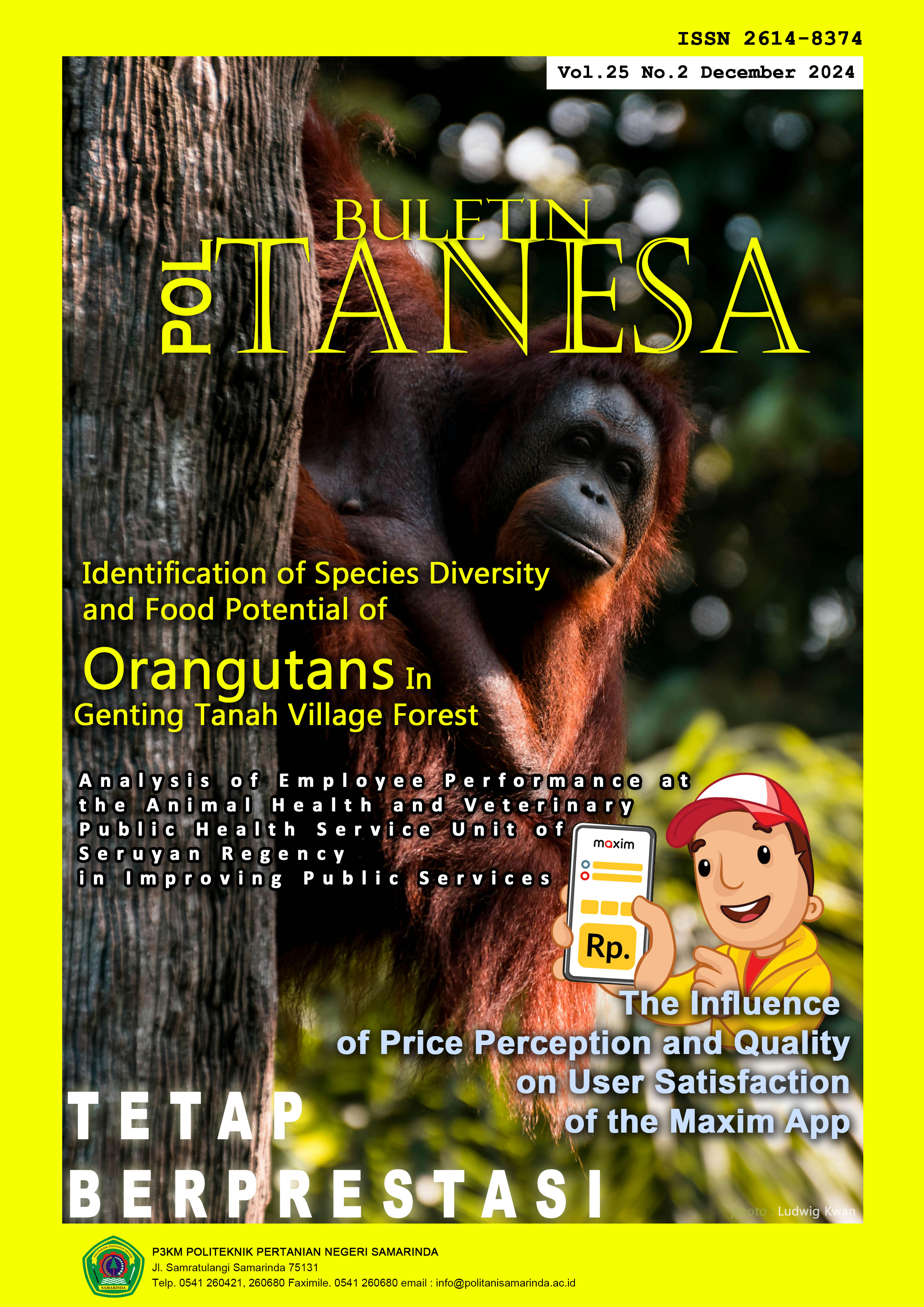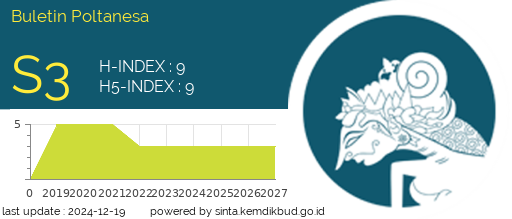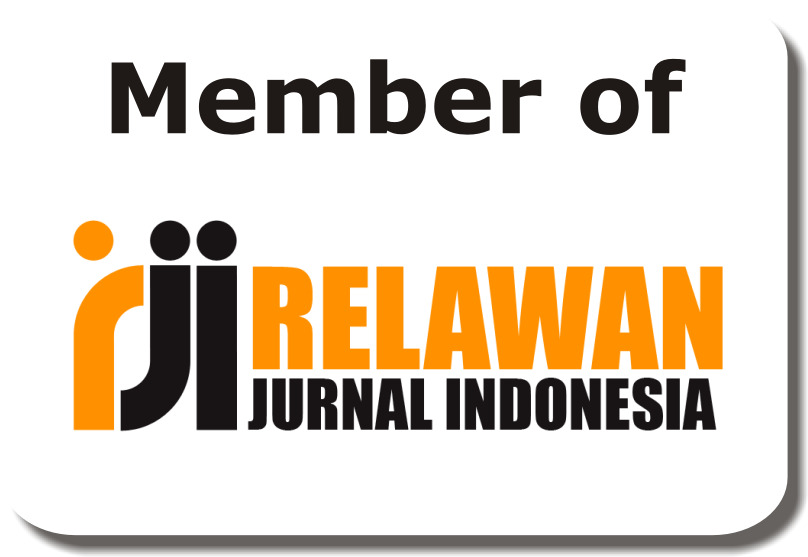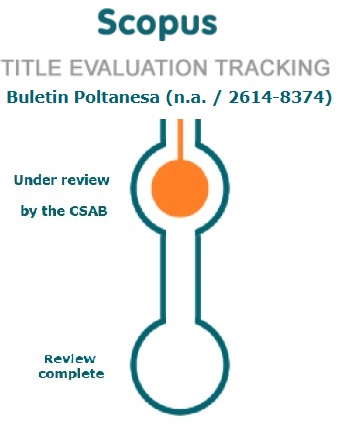Land Surface Temperature Estimation Using Landsat 9 Satellite Imagery in Lamongan Regency, Indonesia
DOI:
https://doi.org/10.51967/tanesa.v25i2.2228Keywords:
Estimation, Landsat 9 Satellite Imagery, LST, Mono window algorithm, TemperatureAbstract
Gerbangkertasusila area (Gresik, Bangkalan, Mojokerto, Surabaya, Sidoarjo, and Lamongan) is a target area for accelerating economic development. Land use change are one of the phenomena that often occur in districts that have the potential for developing the area, one of the areas that has the potential to become a Creative Economy Zone is Lamongan Regency. This study aims to estimate changes in Land Surface Temperature (LST) in Lamongan Regency by utilizing Landsat 9 satellite imagery. Landsat 9 satellite imagery is processed based on a temperature algorithm for estimating temperature calculations. The Landsat 9 satellite was launched in 2021 and is a replacement satellite for the Landsat 8 satellite. The Landsat 9 satellite has 9 (nine) spectral bands and 2 (two) thermal bands. Estimation of LST uses band 4, band 5, and band 10. The LST algorithm used is the mono window algorithm. The mosaic process was carried out on path 118 raw 65 and path 119 raw 65. The results showed that the Lamongan Regency area has a greenish level with a value range of (-0.611) to 0.5 which is dominated by medium density levels. The estimation results of LST in Lamongan Regency are dominated by temperatures in the range of 23°C – 26°C with the highest temperature being 29°C – 33°C.
References
Azua, S., Nnah, S. I., & Ikwueze, H. U. (2020). Spatio-Temporal Variability of Land Use Land Cover and Its Impact on Land Surface Temperature in Zaria Metropolis, Nigeria. FUTY Journal of the Environment, 14, 1-11.
Barsi, J. A., Lee, K., Kvaran, G., Markham, B. L., & Pedelty, J. A. (2014). The Spectral Response of the Landsat-8 Operational Land Imager. Remote Sensing, 6, 10232-10251. doi:https://doi.org/10.3390/rs61010232
Celik, B., Kaya, S., Alganci, U., & Seker, D. Z. (2019). Assessment of the relationship between land use/cover changes and land surface temperatures: a case study of thermal remote sensing. Fresenius Environmental Bulletin, 28(2), 541-547. Retrieved from https://web.cscrs.itu.edu.tr/assessment-of-the-relationship-between-land-use-cover-changes-and-land-surface-temperature-a-case-study-of-thermal-remote-sensing/
Copernicus. (2021). Land Surface Temperature. Retrieved from https://land.copernicus.eu/: https://land.copernicus.eu/global/products/lst#:~:text=The%20Land%20Surface%20Temperature%20(LST,direction%20of%20the%20remote%20sensor
Guillevic, P., Göttsche, F., Nickeson, J., Hulley, G., Ghent, D., & Yu, Y. (2018, January). Land surface temperature product validation best practice protocol version 1.1. Best Practice for SatelliteDerived Land Product Validation. doi:10.5067/doc/ceoswgcv/ lpv/lst.001
Gunawan, I. (2021, March 15). Retrieved from https://radarbojonegoro.jawapos.com: https://radarbojonegoro.jawapos.com/nasional/711313031/lamongan-masuk-kawasan-percepatan-ekonomi-nasional
Ibrahim, M., & Mallouh, H. A. (2018). Estimate Land Surface Temperature in Relation to Land Use Types and Geological Formations Using Spectral Remote Sensing Data in Northeast Jordan. Open Journal of Geology, 8, 174-185. doi:https://doi.org/10.4236/ojg.2018.82011
Kementrian Perindustrian Republik Indonesia. (2021, November 22). https://kemenperin.go.id/artikel/758/Lamongan-Jadi-Sentra-Industri-Maritim. Retrieved from https://kemenperin.go.id/: https://kemenperin.go.id/artikel/758/Lamongan-Jadi-Sentra-Industri-Maritim
Lillesand, T. M., Kieffer, R. W., & Chipman, J. W. (2004). Remote Sensing and Image Interpretation. New York: Wiley.
Manteri Kehutanan Republik Indonesia. (2012). PERATURAN MENTERI KEHUTANAN REPUBLIK INDONESIA NOMOR : P.12/Menhut-II/2012. Jakarta, DKI Jakarta, Indonesia. Retrieved from https://jdih.menlhk.go.id/new/uploads/files/P.12%20(5).pdf
Mensah, C., Atayi, J., Bah, K., Svik, M., Acheampong, D., Boateng, R. K., . . . Marek, M. V. (2020). Impact of Urban Land Cover Change on the Garden City Status and Land Surface Temperature of Kumasi. Environmental Management and Conservation. doi:https://doi.org/10.1080/23311843.2020.1787738
Mustafa. (2020). Study for predicting Land Surface Temperature (LST) Using Landsat Data: A Comparison of Four Algorithms. Journal Hindawi.
Pardede, E. D. (2010). Hubungan Suhu Permukaan dan Penutupan Lahan diwilayah Kota Medan.
Sekertekin, A., & Bonafoni, S. (2020). Land Surface Temperature Retrieval from Landsat 5, 7, and over Rural Areas: Assessment of Different Retrieval Algorithms and Emissivity Models and Toolbox Implementation. Remote Sensing, 294. doi:https://doi.org/10.3390/rs12020294
Sutariya, S., Hirapara, A., & Tiwari, M. K. (2022). Development of Modeler for Automated Mapping of Land Surface Temperature Using GIS and Landsat-8 Satellite Imagery. International Journal of Environmental and Geoinformatics (IJEGEO), 9(2), 54-59. doi:https://doi.org/10.30897/ijegeo.820906
Twumasi, Y. A., Merem, E. C., Namwamba, J. B., Mwakimi, O. S., Silva, T. A., Frimpong, D. B., . . . Mosby, H. J. (2021). Estimation of Land Surface Temperature from Landsat-8 OLI Thermal Infrared Satellite Data. A Comparative Analysis of Two Cities in Ghana. Advanced in Remote Sensing, 10, 131-149. doi:https://doi.org/10.4236/ars.2021.104009
U.S.Geological Survey. (2021). Landsat 9. Retrieved from landsat.gsfc.nasa.gov: landsat.gsfc.nasa.gov
U.S.Geological Survey. (2022). Retrieved from https://earthexplorer.usgs.gov/: https://earthexplorer.usgs.gov/
Uddin, M. J., & Swanpil, F. J. (2021). Land Surface Temperature (LST) Estimation at Kushtia District, Bangladesh. Journal of Civil Engineering, Science and Technology, 12(2), 214-228. doi:https://doi.org/10.33736/jcest.3985.2021
Wang, L., Lu, Y., & Yao, Y. (2019). Comparison of Three Algorithms for the Retrieval of Land Surface Temperature from Landsat 8 Images. Sensors. doi:https://doi.org/10.3390/s19225049
Downloads
Published
How to Cite
Issue
Section
License
Copyright (c) 2024 Buletin Poltanesa

This work is licensed under a Creative Commons Attribution-ShareAlike 4.0 International License.
The copyright of this article is transferred to Buletin Poltanesa and Politeknik Pertanian Negeri Samarinda, when the article is accepted for publication. the authors transfer all and all rights into and to paper including but not limited to all copyrights in the Buletin Poltanesa. The author represents and warrants that the original is the original and that he/she is the author of this paper unless the material is clearly identified as the original source, with notification of the permission of the copyright owner if necessary.
A Copyright permission is obtained for material published elsewhere and who require permission for this reproduction. Furthermore, I / We hereby transfer the unlimited publication rights of the above paper to Poltanesa. Copyright transfer includes exclusive rights to reproduce and distribute articles, including reprints, translations, photographic reproductions, microforms, electronic forms (offline, online), or other similar reproductions.
The author's mark is appropriate for and accepts responsibility for releasing this material on behalf of any and all coauthor. This Agreement shall be signed by at least one author who has obtained the consent of the co-author (s) if applicable. After the submission of this agreement is signed by the author concerned, the amendment of the author or in the order of the author listed shall not be accepted.









